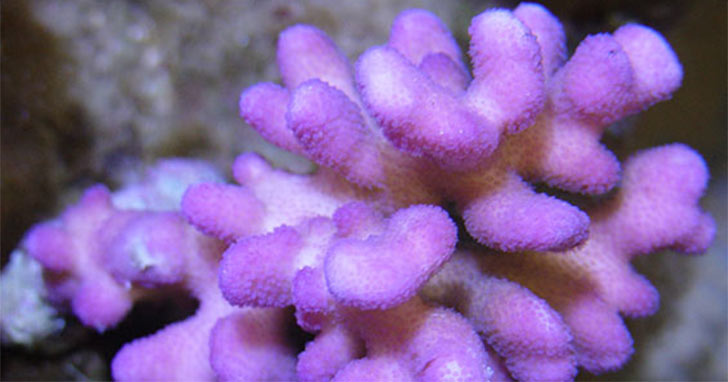
One of the most important aspects of successful reef aquarium care is maintaining proper calcium levels. Why? Calcium is not only vital for the health and growth of corals as well as many other marine invertebrates but also plays a crucial role in maintaining high pH needed in marine systems. Fortunately, calcium is present in a variety of natural sources such as live rock and aragonite substrate. As the live rock and aragonite substrate gradually and naturally dissolve, they release calcium into the aquarium water column in a biologically available form.
The amount of calcium provided through the aforementioned means is sufficient for most fish-only marine aquariums or lightly stocked reef aquariums where the biological demand for calcium is relatively low. However, in heavily stocked reef aquariums that utilize calcium rapidly, supplementation is necessary to replenish these levels.
Calcium Supplementation & Alkalinity
Proper calcium supplementation poses a unique challenge due to a variety of chemical interactions that occur when introduced into a saltwater aquarium system. If calcium levels get too high (over 500ppm), there is a tendency for alkalinity levels to drop. This drop in alkalinity levels affects the buffering capacity of aquarium water and without adequate buffering, pH levels are susceptible to fluctuations. Conversely, if alkalinity gets too high, calcium levels tend to drop as calcium precipitates out of solution. A fine balance must be struck between the various chemical components of saltwater to maintain ideal calcium levels.
Commercially available products help make calcium supplementation easier by taking out the guesswork. However, be sure to test and monitor calcium levels at least every two weeks, preferably once a week, to maintain the ideal calcium level at 350-450ppm. While testing calcium levels, remember to test and monitor alkalinity as well, since calcium and alkalinity levels influence one another.
The most common method of calcium supplementation involves the use of Kalkwasser preparations, balanced liquid calcium supplements or through the use of calcium reactors.
Kalkwasser
German for "lime water," Kalkwasser is simply calcium hydroxide dissolved in water to create a highly concentrated solution. It is used to both supplement calcium and to maintain high pH levels in reef aquariums of all sizes. It is extremely popular since it is readily available, inexpensive and easy to use. However, due to its very high pH (12.00+), the prepared kalkwasser solution must be introduced slowly through a dosing system to prevent drastic increases in pH. Dosing systems vary from electronic units to simple gravity fed units similar to drip IV units used in hospitals. Though the price of these dosing units may vary, they utilize the same principle where the prepared kalkwasser solution is slowly dripped into the main aquarium or sump from a reservoir.
Balanced Liquid Calcium Supplements
Balanced liquid calcium supplements take convenience to the next level. These supplements safely increase calcium levels without affecting alkalinity and vice versa. Manufacturers have devised two-part formulations capable of maintaining both high calcium levels and alkalinity without causing negative reactions. Hence, they are also referred to as 2-Part calcium supplements. If used per manufacturer's recommendations, there is little chance of overdosing or shocking the aquarium inhabitants. Balanced liquid calcium supplements are extremely convenient and are ideal for smaller reef aquariums.
Calcium Reactors
Sophisticated devices such as calcium reactors help automate calcium supplementation in large or heavily stocked reef aquariums. These systems are generally comprised of a calcium reactor, circulation pump, CO2 delivery system, calcium media, and a pH controller. CO2 injected into the reactor chamber filled with the calcium media creates an acidic environment that slowly dissolves the media. The dissolved calcium is then mixed with saltwater and the resulting solution is slowly dripped into the main aquarium. Calcium reactors offer a very precise means of maintaining calcium levels within reef systems with high calcium demands.
Test Calcium Levels and Adjust Supplementation Based on Demand
There are many ways to supplement calcium levels depending on the size and stocking level of a particular reef aquarium system. Regardless of the method of supplementation, it is crucial to test calcium levels on a regular basis. Calcium supplementation is part of a dynamic and organic process in which calcium requirements increase as coral colonies (both soft and stony), coralline algae, and other organisms that actively use calcium grow. Regular testing and monitoring of calcium levels provide you with insight regarding the rate at which corals are utilizing calcium and allow you to maintain the ideal levels for a healthy, beautiful coral garden.
|